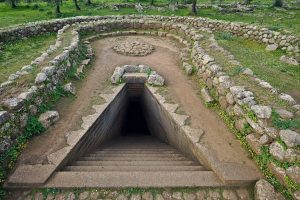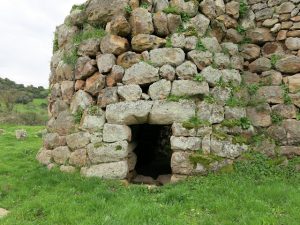Nuraghe Sardinia Megalithic Towers
Scattered across the rugged landscapes of Sardinia, the Nuraghe Sardinia towers stand as silent sentinels to a bygone era. Constructed between 1800 BCE and 500 BCE, these megalithic structures are among the most enigmatic remnants of the Bronze Age Mediterranean world. Their sheer scale, intricate design, and precision craftsmanship challenge our understanding of ancient engineering and raise intriguing questions about the civilizations that built them.
Unlike other megalithic structures, nuraghes were often constructed as fortified towers with internal chambers, narrow passageways, and complex layouts. Some stand over 20 meters tall, with stones weighing several tons carefully fitted without mortar, reflecting sophisticated construction techniques. The precision of these towers suggests that their builders may have had knowledge or tools now lost to history.


Purposes and Mysteries
The construction of the nuraghes exhibits a level of sophistication that seems out of place for the Bronze Age. The use of massive stones, some weighing several tons, and the precision with which they were cut and assembled, suggest advanced engineering skills. However, the absence of written records leaves us to wonder: were these techniques the result of accumulated knowledge over generations, or did the builders possess lost technologies that have since been forgotten?
Recent studies have uncovered evidence of a cosmic event approximately 12,800 years ago, known as the Younger Dryas impact hypothesis. This event, believed to be caused by a fragmented comet exploding in Earth’s atmosphere, may have led to significant climatic shifts and the collapse of several ancient civilizations. The implications of such an event could explain the sudden disappearance of advanced knowledge and the interruption of cultural development in various regions, including the Mediterranean.
Cosmic Events and Cultural Interruptions
The Younger Dryas impact hypothesis posits that a comet exploded in Earth’s atmosphere around 12,800 years ago, causing widespread fires, climatic cooling, and the extinction of megafauna. This event may have disrupted human societies, leading to the loss of knowledge and the subsequent rise of new civilizations. The construction of the nuraghes, with their advanced engineering, could be a reflection of a resurgence of knowledge after such a cataclysmic event.
Evidence supporting this hypothesis includes the discovery of shocked quartz, microspherules, and meltglass at various archaeological sites. These materials, indicative of high-temperature and high-pressure conditions, suggest a cosmic airburst event. Such findings raise questions about the continuity of human knowledge and the potential for advanced civilizations to have existed and been lost due to catastrophic events.
Reconsidering the Narrative of Human Progress
The existence of the nuraghes challenges the traditional linear narrative of human progress. Instead of a steady advancement from primitive to complex societies, the evidence suggests a more cyclical pattern, with periods of advancement followed by cataclysmic events that reset cultural development. The nuraghes may represent a reawakening of knowledge after such a reset, indicating that ancient civilizations may have been more sophisticated than previously thought.
This perspective invites us to reconsider our understanding of history and the potential for lost civilizations to have influenced the development of megalithic architecture. The study of these structures not only sheds light on the past but also encourages us to remain open to the possibility that our current understanding of history may be incomplete.
Additional reading:
-
Puma Punku and Tiwanaku: Impossible Stonework of the Andes
-
Easter Island Moai: Guardians of Stones Across the Pacific
- New Study Reveals Comet Airburst Evidence 12,800 Years Ago





